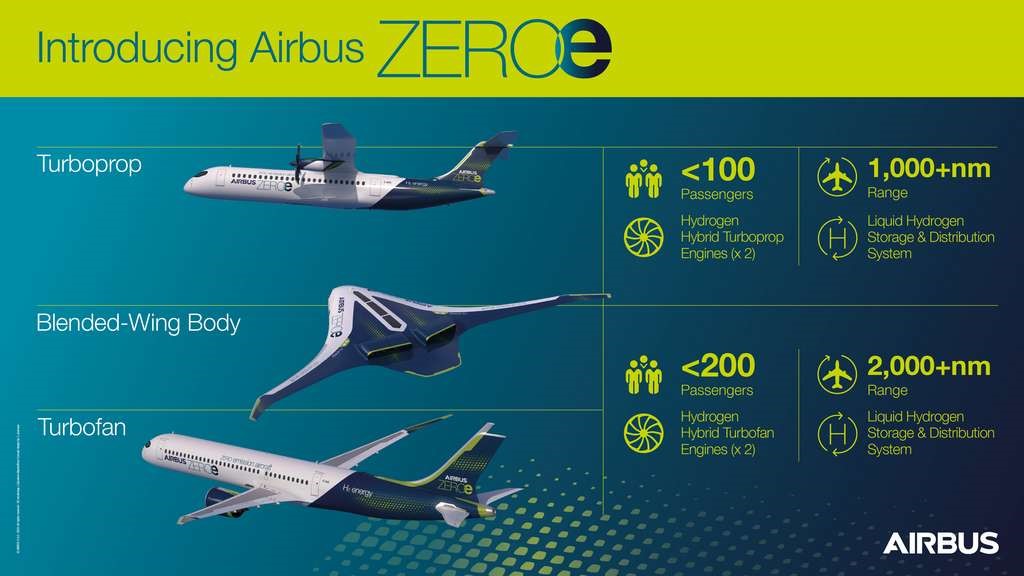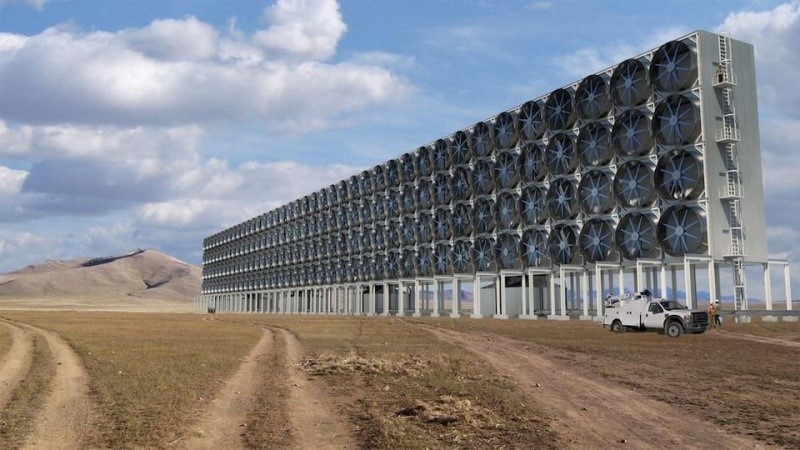All the information summarized below is the result of the compilation of numerous international studies aimed at understanding what can really be expected from hydrogen to reduce emissions from air transport.
Until September 2020, we only talked about biomass as an alternative fuel. Then Airbus announced: we are going for future hydrogen-powered aircraft that have the potential to be CO2 emission-free. All media jumped on it. What should we think?
By Alain Peri, Board member of UECNA
1. Understanding Hydrogen
Hydrogen: not an energy source, but an energy carrier.
Even today, the main source of hydrogen is natural gas, for the chemical industry, especially the production of ammonia and nitrogenous fertilizers, metallurgy…
All over the world, hydrogen is classified according to its source of production:
- Gray hydrogen is extracted from fossil fuel, natural gas with high CO2 emissions.
- Blue hydrogen: Same energy sources but with CO2 sequestration.
- Green hydrogen produced by electrolysis of water with renewable electricity.
Hydrogen can be stored in gaseous form, but the most efficient solution is in liquid form at minus 253°C, where the word ‘efficient’ doesn’t really apply because the part of the green starting electrical energy that is lost for storage and liquefaction is estimated at 18%, added to the energy loss compared to the electricity consumed for the electrolysis, 34%. That makes a loss of over 50%. First conclusion: if it is possible to use electricity directly, do not use hydrogen!
Hydrogen is the smallest molecule! The problem is the volume required, four times greater than kerosene for the same amount of energy. The energy-to-weight ratio seems very favourable, except that it requires a bulky storage tank and it is difficult to ensure the high pressure, especially for liquid cryogenic H2, while maintaining the temperature at minus 253°C.
| Diesel | H2 | H2 | |
| Energy density | Kerosene | Compressed | Liquid |
| Megajoules per litre | 36 | 5 | 8 |
| Megajoules per kg | 45 | 120 | 120 |
2. Hydrogen & Aircraft
Airbus announced in September 2020 that it could present its first hydrogen aircraft in 2035. The architecture of the aircraft will have to be completely reconsidered, because the ‘current tanks are not suitable for transporting hydrogen’. Their size and shape should be revised, as well as their number and position in the aircraft. ‘More than engines, these cryogenic hydrogen tanks are the most important technological barrier.’ They must be cylindrical or spherical to withstand pressure, i.e. in the rear cabin as envisioned by Airbus. Due to the loss of passenger capacity, an Airbus 321 will be needed to carry the current number of passengers of an Airbus A320.
As for fuel cells, these are currently being considered for the aircraft power system on the ground, APU or for aircraft with low passenger numbers over relatively short distances. Liquid hydrogen is only considered by Airbus for short- or medium-haul aircraft. A flying wing concept has been devised for the longer term.
Finally, for long-haul flights, only the use of synthetic fuel (synfuel) made from green hydrogen and CO2 captured in the air with some additions is retained. In principle, this solution does not emit any CO2, because only the CO2 trapped in the air during manufacture is emitted. In fact, synthetic kerosene (synfuel) is the only credible option. No real modifications to the reactors will be necessary. It is gradually mixed with fossil kerosene, but at what proportion? Worldwide?
3. Airport Supply Infrastructure
As one expert says, we will be faced with the ‘chicken-and-egg’ paradox. In order for commercial aviation to launch hydrogen-powered aircraft, airports must be equipped to supply them. The investment will be very substantial and complex. There will be no delivery of cryogenic liquid hydrogen in tank trucks for storage. The losses will be too great and the costs associated with them. So either the hydrogen is produced by an on-site electrolyser or supplied by a pipeline. Here too, a pipeline to transport gaseous hydrogen under pressure will be much more expensive to build than a simple pipeline for kerosene!
The scale of production will continue to be the major issue in terms of electrolysers, technology, size and airborne CO2 capture, requiring very large industrial investments, with high energy consumption (see image below). Cost will be an important factor in the development.
4. Green Hydrogen, Really?
Today, most of the hydrogen produced in the world is extracted from fossil hydrocarbons, mainly methane. Following Airbus’s announcement in September 2020 of its Zero Emission project and hydrogen plan, researchers from Atecopol, a French expert group devoted to the aviation economy, have published criticisms, in particular about the amount of green electricity that would be needed to produce the hydrogen needed. . Example: a large airport such as Paris CDG if all aircraft were to run on hydrogen.
Starting assumptions: for electricity to be 100% green, it can only come directly from solar, wind or nuclear production systems. On the general power grid, it would be a mix of different energy sources. For the Paris-Charles-de-Gaulle airport with 100% hydrogen aircraft, the researchers calculated that between 10 and 18,000 wind turbines would be needed, the equivalent of a French department, 1,000 km² of photovoltaic panels or 16 nuclear reactors…
5. Impact On Global Warming And Health
As for global warming, assuming hydrogen is 100% green: no CO2 emissions but nitrogen oxide emissions, contrails and the induced cirrus formation. The zero emissions promised by Airbus is therefore a lie. The noise around airports will be the same, unless there is a very drastic modification of the aircraft in a second phase, the nitrogen oxide emissions will be the same, for ultra-fine particles no reaction has been found to date.
6. Conclusion
If many industries want to get hydrogen as energy or store electricity, how do you prioritize? What first?
In fact, for commercial aviation, the only credible option to use hydrogen is green synthetic kerosene. It can be manufactured in industrial areas in combination with, for example, chemicals. No special infrastructure at airports, the same means of transport, no major modifications to aircraft engines. And, essential, a gradual increase in development is possible. However, envisioning zero-carbon air transport by 2050 is just a dream or a false promise. If in 2050 20/30% of the kerosene used in the world was synthetically made with green hydrogen and captured CO2, which would be great for the planet!
For Atecopol, this hydrogen path is no more or less than a dead end. ‘The question is not to be for or against aviation, but to ask the question of its use and its role in a society, taking into account the physical and ecological limits that determine our future, and a fortiori is growth of air traffic is simply an above-ground vision that runs up against clearly defined physical limits.’
As the airline industry suffers from the Covid 19 pandemic and has benefited from billions of state aid, commitments were needed. So what could be better than promising zero emissions by 2050 at a time when global warming seems to be getting more and more attention and is happily holding on!
Airbus Advertising on the project Zero Emission

And below: Design of Carbon Engineering air contactor

Design of Carbon Engineering air contactor that would collectively capture about a million tons of CO2 per year, equivalent to the annual emissions of 250,000 cars. / SOURCE: Carbon Engineering https://energypost.eu/extract-co2-from-our-air-use-it-to-create-synthetic-fuels/
